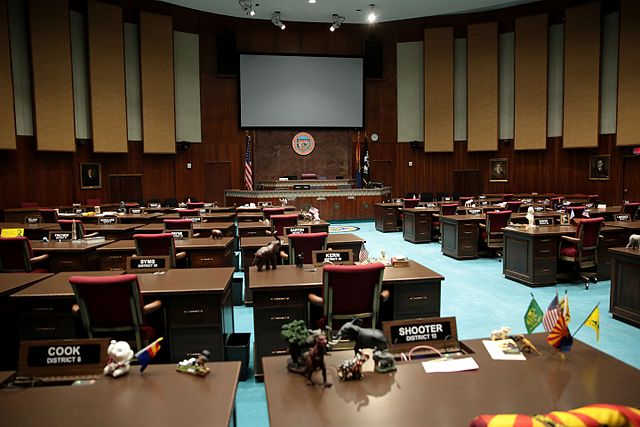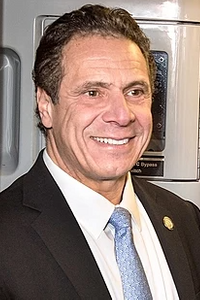Tag: resignation
-
Anaheim mayor Harry Sidhu resigns

Anaheim Mayor Harry Sidhu announced on May 23 that he would resign after information about an ongoing federal corruption investigation was made public earlier this month. Sidhu’s resignation was effective May 24. According to a May 12 affidavit, the purpose of the FBI investigation is to determine whether Sidhu “shared privileged and confidential information with…
-
Karen Peterson resigns from Louisiana State Senate

Karen Peterson (D) resigned from the Louisiana State Senate on April 8 to focus on recovering from depression and a gambling addiction. She represented District 5 from 2010 to 2022. According to The New Orleans Advocate, a federal probe is being conducted into Peterson’s finances and gambling addiction. Prior to joining the state Senate in…
-
California Supreme Court Justice Mariano-Florentino Cuéllar resigns

California Supreme Court Justice Mariano-Florentino Cuéllar resigned on Oct. 31 to become president of the Carnegie Endowment for International Peace in Washington, D.C. Former Gov. Jerry Brown (D) appointed Cuéllar to the state supreme court in July 2014, and voters retained him in November 2014 with 68% of the vote. Before joining the California Supreme…
-
Kyle Bailey resigns from Maine state House

Maine state Rep. Kyle Bailey (D-27) resigned on Oct. 15, citing a new job opportunity. “Due to an exciting professional opportunity that has arisen recently, I am unable to complete my full term as state representative,” Bailey said in a statement. Bailey was first elected to represent Maine’s 27th House District in 2020, defeating Roger…
-
New Mexico Secretary of Education Ryan Stewart resigns

Ryan Stewart resigned as New Mexico’s secretary of education on Aug. 20, citing health issues in his family. Governor Michelle Lujan Grisham (D) first appointed Stewart to the position in August 2019. Stewart said he would continue serving at the Public Education Department in an advisory role. Lujan Grisham announced on July 29 that former Los…
-
Tony Navarrete resigns from the Arizona state Senate

Senator Tony Navarrete (D) resigned from the Arizona state Senate on Aug. 10. He represented District 30 from 2019 to 2021. He also represented Arizona House District 30 from 2017 to 2019. Phoenix police arrested Navarrete on Aug. 5, 2021, on suspicion of sexual conduct with a minor. According to authorities, the alleged sexual conduct…
-
New York Gov. Andrew Cuomo announces resignation on Aug. 10

New York Gov. Andrew Cuomo (D) announced on Aug. 10 that he would resign, effective Aug. 24. Lt. Gov. Cuomo was first elected governor in 2010 and re-elected in 2014 and 2018. He was New York’s attorney general from 2007 to 2010. Cuomo also served in President Bill Clinton’s (D) cabinet as the Secretary of…
-
Rep. Sheryl Williams Stapleton resigns from New Mexico House of Representatives

Representative Sheryl Williams Stapleton (D) resigned on July 30 following allegations of racketeering and money laundering. In July 2021, a federal grand jury subpoena was served on the Albuquerque Public Schools district where Stapleton was working as the district’s director of career and technical education. According to the Albuquerque Journal, the investigation was triggered by…
-
Douglas Peters resigns from Maryland Senate on July 30

Maryland Sen. Douglas Peters (D) resigned from his position in the Maryland Senate on July 30. Peters, who represented District 23, first assumed office in 2007, and was subsequently re-elected three times. Peters had announced his resignation at the beginning of July, following his appointment to the University of Maryland’s Board of Regents by Maryland…
-
Alex Kasser resigns from Connecticut Senate

Connecticut state Senator Alex Kasser (D) resigned from the legislature on June 22. Kasser, who represented District 36, cited her ongoing divorce proceedings as the reason for her resignation. In a statement, Kasser said, “It is with deep sadness that I announce my resignation as State Senator. Serving the residents of Connecticut’s 36th Senate district…

